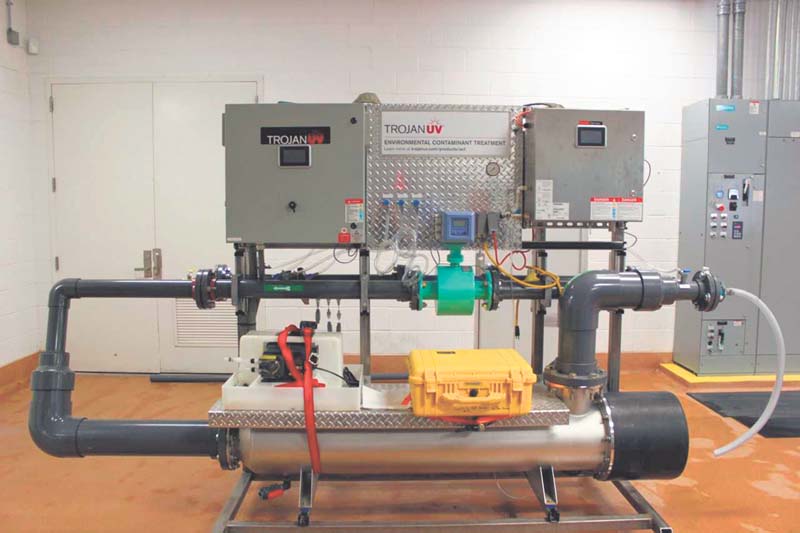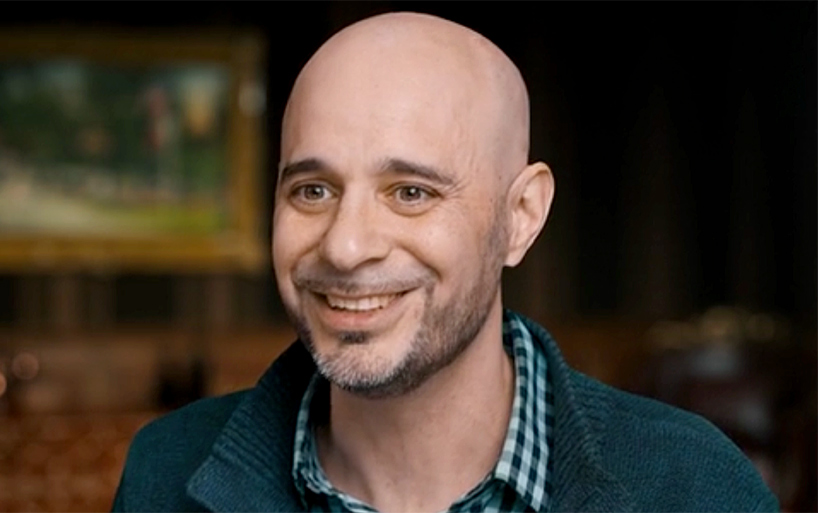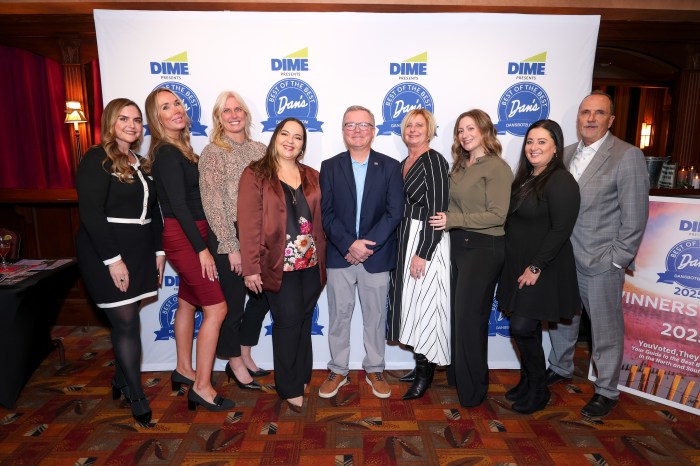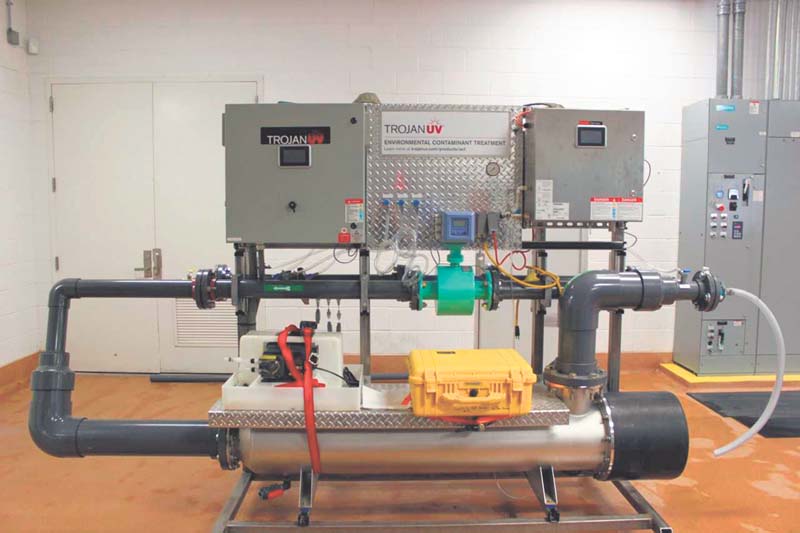
(AOP) system that will be installed
at the Plainview Water District. It is considered the most promising
technology to treat 1,4-dioxane. (Photo courtesy of Plainview Water District)
In a release last week, the Plainview Water District said that it is dedicated to tackling 1,4-Dioxane in the local water.
“The Plainview Water District’s commitment to providing the Plainview-Old Bethpage community with high-quality water is unwavering,” the district said. “The district takes an immense amount of pride in the service and product it provides to the community and will continue to invest in its infrastructure to ensure the integrity of the community’s drinking water.”
A recent study found that 1,4-dioxane, a synthetic chemical that is a suspected carcinogen, is present in more than 70 percent of the water wells across Long Island. Unfortunately, this includes the water in Plainview-Old Bethpage community. The removal of 1,4-dioxane from all of Long Island’s groundwater is estimated to cost hundreds of millions of dollars, including additional annual costs for increased operating and maintenance costs.
“The Plainview Water District has taken a proactive and aggressive stance against 1,4-dioxane and is moving quickly to develop, study and test solutions for treating it,” Plainview Water District Board of Commissioners Chairman Marc Laykind said in a statement. “While the Maximum Contaminant Level (MCL) for 1,4-dioxane has yet to be finalized by the New York State Health Department, and only one recently approved treatment system for 1,4-dioxane exists in Nassau County, that is not stopping us from testing technologies that are proving to be effective and putting ourselves in the best possible position for compliance.”
In addition to sampling for 1,4-dioxane in their wells, the district’s Board of Commissioners has authorized a series of actions in anticipation of the impending MCL, which include:
• Testing advanced treatment systems for the removal of 1,4-dioxane through the Center for Clean Water Technology (CCWT) at Stony Brook University. This pilot program will study two types of Advanced Oxidation Processes (AOP), a set of chemical treatment procedures designed to remove organic materials, in conjunction with another district on Long Island. AOP is the most promising type of treatment for the removal of 1,4-dioxane from potable water systems.
• Trying a third AOP pilot program at Plant 1 to treat for 1,4-dioxane.
• Production of educational materials including consumer fact sheets, newsletters and website resources to provide information in order to keep residents updated on the district’s action to comply with impending regulation.
• Pursuing litigation—along with 23 other Long Island water providers—to hold the manufacturers of 1,4-dixoane accountable because the district says it believes residents should not be held liable for the expense of cleaning up the mess left behind by polluters.
• Pursuing any and all potential funding sources to keep costs of needed treatment upgrades as low as possible for residents.
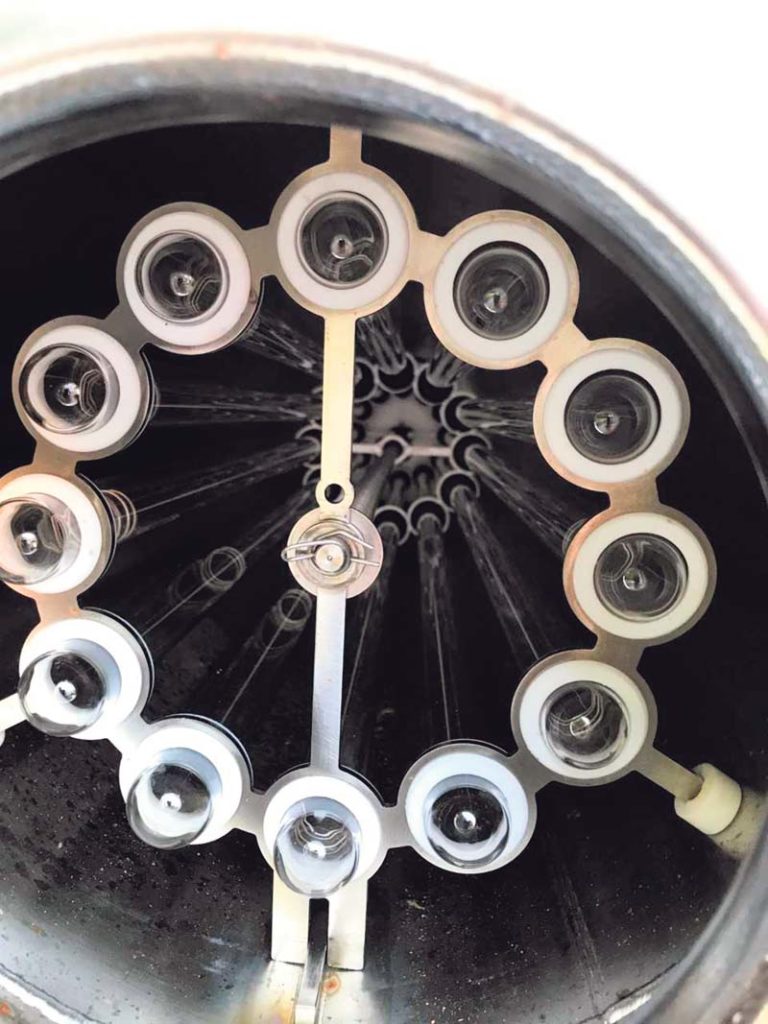
The district has already received grant funding to pursue the various 1,4-dioxane pilot programs, including the recent award of a design and planning grant to construct additional 1,4-dioxane treatment. Currently, the district is in the process of submitting an additional grant application to the state for the maximum of $3 million annually. In total, Plainview Water Distict has been awarded more than $5 million in grant funding for water treatment projects, which includes treatment pilots for the removal of 1,4-dioxane, but does not include money for ongoing operations, maintenance, testing and upgrades.
These advanced piloting and planning operations, the district said, will place them in a very favorable position to implement wellhead treatment as quickly as possible.
“Plainview Water District remains aggressive in its pursuit of treatment that is above and beyond the minimum standards set by the state and federal government,” Plainview Water District Commissioner Amanda Field said in a statement. “We are proud to be one of a handful of water districts actively testing the effectiveness of AOP for removing 1,4-dioxane from Long Island’s groundwater. We are confident that our pilot programs will aid in supplying the information needed to help establish a universal standard that will expedite the approval process for bringing AOP treatment systems online.”
There are many factors impacting how quickly the treatment systems can be put into service, beyond the control of the district. One of the most important hurdles is regulatory approvals. While AOP treatment systems are proving to be effective, each system must be specifically tuned to the individual well it is treating. To this end, the Nassau County Health Department requires a treatment pilot study for each well site impacted by 1,4-dioxane. Only after comprehensive testing and quality control measures occur can the new treatment systems be designed and come online. There are also other factors inhibiting the treatment implementation timeline including the turnaround for the manufacturers to produce the volume of special, customized treatment equipment needed island-wide, availability of appropriately-skilled contractors and engineers, analytical lab capacity and water system operator training. Water districts across the island are currently asking the state to give them extra time to implement treatment facilities of these magnitudes.
“With essentially every water provider on Long Island needing this very specific treatment equipment, the manpower to design and construct these complex systems, and the necessary approvals to operate it, scarcity of resources is a real concern,” Plainview Water District Commissioner Andrew Bader said. “We are fortunate to have a great team of experts with decades of experience sorting out all of these variables. We have the knowledge and expertise to complete the task, we just need the time and resources to do so.”
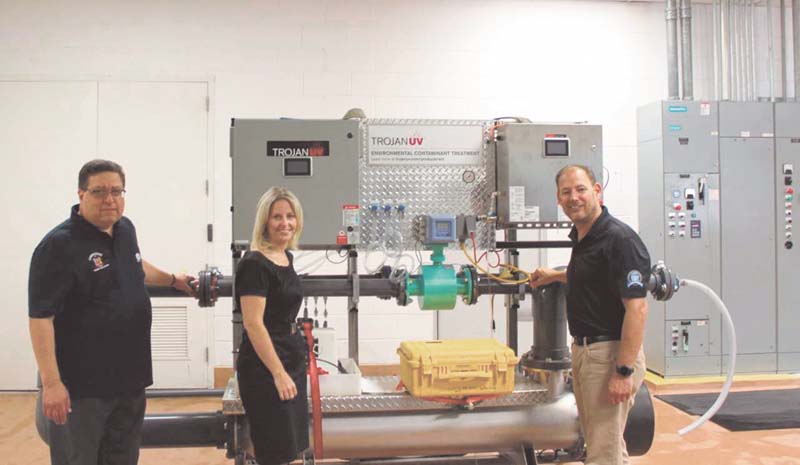
Legislator Arnold Drucker of Plainview, along with other legislators, recently listened to testimony about 1,4-dioxane and how its going to take time for districts to get these treatment systems up and running. With that said, he’s proud of his hometown’s district with how they have handled the contaminant thus far.
“I am very impressed,” said Drucker. “They have been so active and ahead of the curve. They saw this coming down the pike a long time ago. They’ve been piloting advanced treatment technologies for a while now. They’ve been going to forms and seminars all over the country. They are really utilizing their knowledge and experience to obtain state-of-the-art technology and equipment to deal with this process.”
For further information or if you have any questions, call the district at 516-931-6469, email info@plainviewwater.org or visit www.plainviewwater.org.




